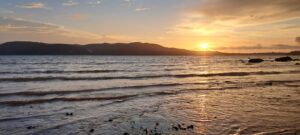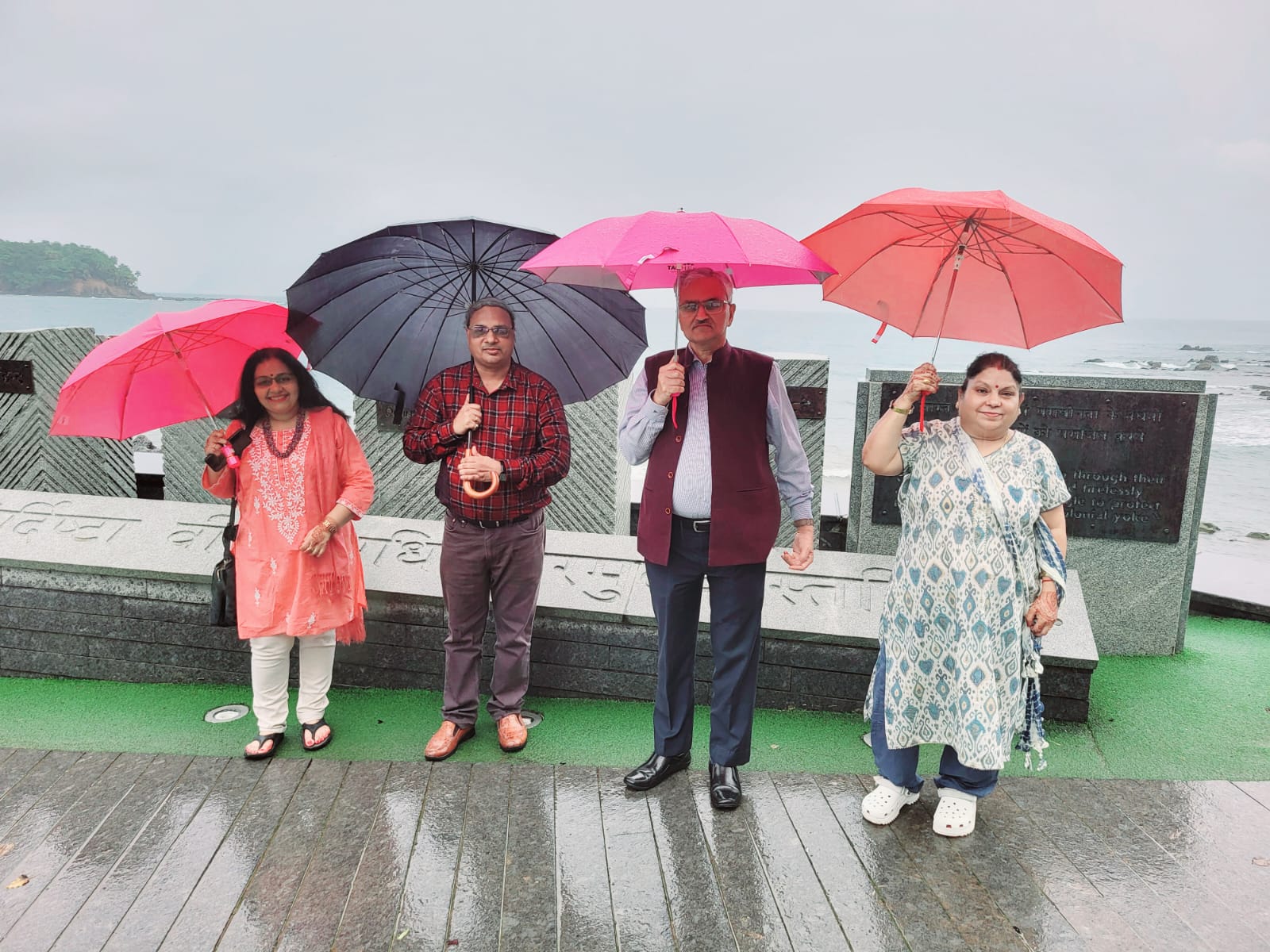CNN Central News & Network–ITDC India Epress/ITDC News Bhopal: The pleasant mornings of the Andaman and the imagination of its colorful sunsets fill the mind with peace. The gentle and sometimes roaring sound of the sea waves, with the golden rays of the sun dancing on them, seems to wash away all worries. Sitting by the sea under the open sky and gazing at the horizon feels as if nature has painted that moment with its finest brush.
As the morning sun rises above the horizon, the color of the sky shifts from a light orange to a deep blue. The waves of the sea seem to welcome this change, bringing new energy with every ripple. In that calm, cool breeze, as the sun gradually warms the air, the mind fills with an inexplicable joy.
Strong winds, cyclone alerts, the surging waves of the sea, and heavy rain did not deter our determination as we set out for Port Blair, Andaman—a city known as the land of heroes or an island far from pollution, a plastic-free place endowed with natural beauty. The weather here sometimes tests you, with sudden bright sunlight or rain being part of the island’s temperament. We, four people, shielded by our umbrellas, witnessed the beauty of this island. By 5 pm, as the sun sets, darkness quickly engulfs the area. Yet, we had to visit Flag Point, where, under the leadership of Subhas Chandra Bose, the national flag was hoisted by Indian freedom fighters in 1943, declaring the Andaman and Nicobar Islands free from British rule. Visiting this place evokes a unique sense of emotion.

Sunrises and sunsets in Andaman are both spectacular and revered. The worship of Surya Dev (the Sun God), the source of life and light, is central to the region, akin to the rituals of Chhath Puja where the first rays of the morning sun and nature are worshipped for their beauty and prosperity. The evening ritual of offering ‘Arghya’ during Chhath, in which prayers are made for health and prosperity, brings out similar sentiments here. Our driver, Manu, from Kerala, whose wife is from Bihar, explained the significance of Chhath Puja, highlighting how Andaman, where the sunrise and sunset occur earlier than in other parts of the country, exhibits unity beyond regional and caste lines with unwavering devotion to the sun’s eternal energy. This filled my heart with joy.
Netaji Subhas Chandra Bose’s contribution to the Indian freedom struggle, particularly in the context of the Andaman and Nicobar Islands, was extremely significant. In 1943, during World War II, the Japanese army took control of the islands. With their support, Subhas Chandra Bose, who had formed the Azad Hind Fauj, declared the islands as liberated Indian territory. This event occurred on December 30, 1943, when the Japanese built bunkers and installed cannons on the island, remnants of which can still be seen today.
Netaji’s belief was that India’s freedom could only be achieved through direct confrontation with the British. He disagreed with the Indian National Congress’s policy of non-violence and established the Azad Hind Fauj. With Japanese and German support, he tried to lead a global freedom movement. His famous call, “Give me blood, and I will give you freedom,” stirred the hearts of millions of Indians. This act was unique in the history of the Indian freedom movement as it marked the first instance of Indian territory being declared independent and the Indian flag being hoisted. Netaji’s hoisting of the flag in Andaman became a powerful symbol of self-reliance, dignity, and the resolve for freedom among Indians. It served as a source of inspiration, showing that freedom was achievable.
In 2018, to mark the 75th anniversary of Netaji’s historic visit, Prime Minister Narendra Modi announced the renaming of three islands:
Havelock Island – “Swaraj Island”
Ross Island – “Netaji Subhas Chandra Bose Island”
Neil Island – “Shaheed Island” The purpose of this renaming was to honor the contribution of Netaji and the Indian National Army, also known as Azad Hind Fauj, to the freedom struggle.
Standing at the Flag Point, controlling our emotions, we watched the sunset—a magical experience. Watching the sun gradually dip into the sea felt like time had come to a halt. The changing colors of the sky—red, pink, orange, and purple—combined to create a unique spectacle. Walking on the shore, feeling the soft sand beneath and taking in the expanse of calm waters made it feel as if the soul had found wings. In the dark of night, the same sea that seemed full of life during the day glistened with a mysterious beauty. The waves sparkled like silver in the moonlight, and the scene under a star-filled sky felt like a dream. While the urge to take pictures was strong, some experiences are beyond words or images; they can only be felt. Andaman’s ethereal experience is one of them.
(The author is a psychologist and educator.)
#Andaman #HistoryAndNature #MedhaBajpai #TravelInsights







